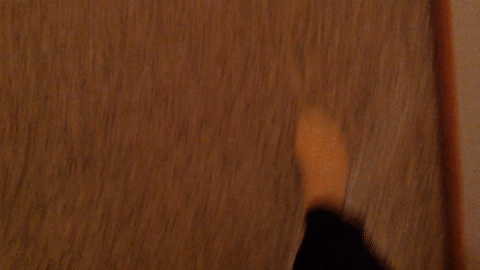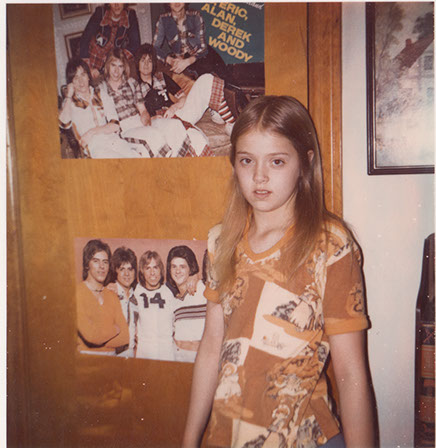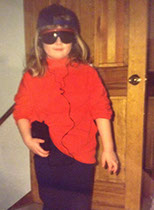Sonic Memories:
Stories from My
Listening History
My mother always said, "children are supposed to be seen and not heard." This chapter details my childhood growing up in a home where children were requested to be quiet. I present this piece in three sections of audio. The first introduces my family and includes diaries I recorded as a kid, which reveal my parents' rules about sound. Side A details my sister’s and my experience growing up in a quiet home and having to be mindful about sound we produced. Side B illustrates my mother’s side of the story. Her perspective helps me examine my family's history and cultural practices. I connect our stories to illustrate a relationship between culture, sound, and listening. It is my family’s listening practices that guide my studies at graduate school. Without their help and their influence, I wouldn’t be able to uncover the cultural importance of sound and the way it affects our lives.

From left to right: Cindy (mom), me, Nikki (sister)

Me
"I’ve been recording myself for a long time. I digitally record now, but before I got an iPhone I recorded myself with a tape recorder."

Me and Felecia (bff)
"She said, Brooke, your family is obsessed with quietness.”
I draw on ideas from Brandon LaBelle to figure out how sound is defined within different spaces, and how we listen and interpret sound through cultural, historical, and embodied conditions (xvii).


Josh (brother), me, Sean (brother)
Me and Nikki (sister)
Side A

Nikki (sister), Me
"My sister’s experience is identical to mine. Once our parents came home from work and were set up to watch their nightly programs, I would have to closely monitor my output of sound."

Nikki (sister)
"We laughed a lot, but it’s clear we both see eye-to-eye about my parents’ noise intolerance."
"[Ceraso] writes 'sound requires listeners to attend to how sound works with and against other sensory modes to shape their embodied experiences.'"

Me and Nikki (sister)
"I was not absent; I was present. I was so present because I was keenly aware of my heavy, sound-producing body."

Side B

Cindy (mom)
"A few weeks after the exchange, I drove back to Ohio for the weekend to see my mother, and she questioned me about it again over dinner. She stated she didn’t know when she said that phrase to me, but later remembered that it’s what her dad used to tell her as a kid. She said she was astounded that she unknowingly passed on the same sentiment to her own children."
"When I was growing up, I lived with my parents and my father’s parents, John and Opal…. We lived on a farm in southern Clermont County.”

Family farm


Opal and John (great-grandparents)
Donald (grandfather)
"And you would sit there because children were to be seen and not heard. Ya know? You’d sit in that booth and you’d eat your bag of chips and you’d listen to whatever was on the jukebox."
Me and Grandma (Helen)
"And you would sit there because children were to be seen and not heard. Ya Know?!"

Cindy (mom)

Cindy (mom)
"As I examine my mother’s stories, I see my working-class upbringing and an emphasis on my geographical location within rural Ohio."
Mom and me. Thank you Nikki for filming this video.
Hidalgo | Chambers | Hutchinson | Shade-Johnson | Brentnell | Leger | Braude | Sweo | Nur Cooley
Published by Intermezzo, 2018
Works Cited
Anderson, Erin R. "The Olive Project." Kairos: A Journal of Rhetoric, Technology, and Pedagogy, vol. 15, no. 2, 2011, http://kairos.technorhetoric.net/15.2/topoi/anderson/watch.html. Accessed 2 Nov. 2018.
---. "'What Hadn't Happened': A Multimedia Memoir." Provocations: Reconstructing the Archive, edited by Patrick W. Berry, Gail E. Hawisher, and Cynthia L. Selfe, Computers and Composition Digital P/Utah State UP, 2016, https://ccdigitalpress.org/book/reconstructingthearchive/anderson.html. Accessed 2 Nov. 2018.
Ceraso, Steph. "(Re)Educating the Senses: Multimodal Listening, Bodily Learning, and the Composition of Sonic Experiences." College English, vol. 77, no. 2, 2014, pp. 102-123.
Ceraso, Steph, and Kati Fargo Ahern. “Composing with Sound: Embodied Soundscape Design.” Composition Studies, vol. 43, no. 2, 2015, https://www.uc.edu/journals/composition-studies/issues/ceraso-and-ahern.html. Accessed 2 November 2018.
Glenn, Cheryl, and Krista Ratcliffe, editors. Silence and Listening as Rhetorical Arts. Southern Illinois UP, 2011.
Hidalgo, Alexandra. "Family Archives and the Rhetoric of Loss." Provocations: Reconstructing the Archive, edited by Patrick W. Berry, Gail E. Hawisher, and Cynthia L.Selfe. Computers and Composition Digital P/Utah State UP, 2016, https://ccdigitalpress.org/book/reconstructingthearchive/hidalgo.html. Accessed 2 Nov. 2018.
LaBelle, Brandon. Acoustic Territories: Sound Culture and Everyday Life. Continuum, 2010.
Noah and the Whale. "Mary." Peaceful, the World Lays Me Down, Mercury Records, 2008.
Powell, Malea. "Rhetorics of Survivance: How American Indians use Writing." College Composition and Communication, vol. 53, no. 3, 2002, pp. 396-434.
Ratcliffe, Krista. "Rhetorical Listening: A Trope for Interpretive Invention and a ‘Code of Cross-Cultural Conduct.’” College Composition and Communication, vol. 51, no. 2, 1999, pp. 195-224.
Rhodes, Jacqueline, and Jonathan Alexander. “Genealogies.” Techne: Queer Meditations on Writing the Self, by Alexander and Rhodes, Computers and Composition Digital P/Utah State UP, 2015, https://ccdigitalpress.org/book/techne/genealogies.html. Accessed 2 Nov. 2018.
Stone, Jonathan W. “Listening to the Sonic Archive: Rhetoric, Representation, and Race in the Lomax Prison Recordings.” Enculturation, vol. 19, 2015, http://enculturation.net/listening-to-the-sonic-archive. Accessed 2 Nov. 2018.



-u3931-fr.jpg)





